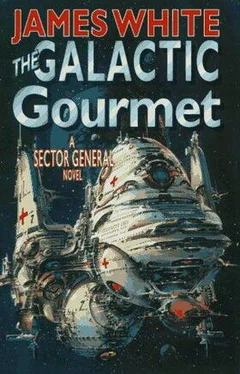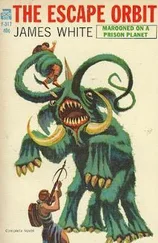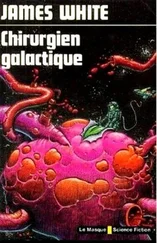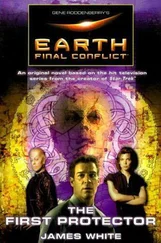It might have been Gurronsevas’s imagination, but there seemed to be a hint of pride creeping into the library computer’s condescending voice as it continued, “In every case this was accomplished, not by a slow, patient buildup and widening of communications until the exchange of complex philosophical and sociological concepts became possible, but by rescuing and giving medical assistance to a sick or space-wrecked alien.
“In giving this assistance the hospital demonstrated the Federation’s goodwill towards newly-discovered intelligent species more simply and directly than by any time-consuming exchange of concepts.
“As a result there has recently been a change of emphasis in First Contact policy …”
Just as there was only one known way of traveling in hyper-space, there was only one method of sending a distress signal if an accident or malfunction stranded a vessel in normal space between the stars. Tight-beam subspace radio was not a dependable means of interstellar communication, subject as it was to interference and distortion by the radiation from intervening stellar bodies, as well as requiring inordinate amounts of a vessel’s power that a distressed ship was unlikely to have available. But a distress beacon did not have to carry intelligence. It was simply a nuclear-powered device which broadcast a location signal, a subspace scream for help which ran up and down the communications frequencies until, in a matter of days or hours, it died.
Because all Federation vessels were required to file course and passenger details before departure, the position of a distress beacon was usually a good indication of the physiological type of the species that had run into trouble, and an ambulance ship with a matching crew and life-support equipment was sent from the ship’s home planet. But there had been instances, far more than were realized, when the disasters had involved beings unknown to the Federation in urgent need of help which the would-be rescuers were powerless to give.
It was only when the rescue ship concerned was large and powerful enough to extend its hyperspace envelope to include the distressed vessel, or when the casualties could be extricated safely and a suitable life-support provided them within the Federation ship, were they transported to Sector General. The result was that many hitherto unknown life-forms, beings of high intelligence and advanced technology, were lost except as interesting specimens for dissection and study.
Another factor that had to be considered was that, whenever possible, the Federation preferred to make contact with a star-travelling race. Species who were intelligent but planet-bound might give rise to additional problems because there was no certainty whether full contact would help or hinder their future development, give them a technological leg-up or a crushing inferiority complex, when the great, alien starships began dropping out of their skies.
For a long time an answer to these problems had been sought and, in recent years, one had been found.
It had been decided to design and equip one vessel that would respond only to those distress beacons whose positions did not agree with the flight plans filed by Federation starships, a very special ambulance ship that would answer the cries for help of life-forms hitherto unknown to the Federation.
Gradually, as Gurronsevas concentrated more and more deeply on the displays, it seemed that his mind and the darkened casualty deck around him were becoming filled with pictures of devastated ships and drifting masses of space wreckage, and populated with the dead or barely living debris they contained. Sometimes the organic wreckage had to be extricated with great care because it belonged to a species new to the Federation, and beings who were in great pain and mental confusion from their injuries could react violently against the strange and terrifying monsters who were trying to rescue them. But there had been other times when the distressed ship had been undamaged and it was the crew who were urgently in need of assistance. Then it was Rhabwar ’s commanding officer, a specialist in other-species technology, who had to find a way into the vessel and solve its alien and life-threatening engineering puzzles before the injured or diseased crew-members, who again might react violently at their rescuers’ approach, could be treated.
The log was filled with such instances.
There was a full description of Rhabwar’s response to the distress signal from a ship of the Blind Ones and their sighted and incredibly violent mind-partners, the Protectors of the Unborn. And there was the vast gestalt creature of unknown name and origin whose miles-long colonizing vessel had been wrecked in interstellar space and a large-scale military as well as major surgical operation had been required to put the scattered pieces together and transport them to their target world. And there had been the Dwerlans and the Ians and the Duwetz, and many others.
Gurronsevas did not know enough about medicine to understand all of the clinical details, but that no longer mattered. So deeply engrossed did he become in the information and incredible events that were unfolding on the screen that, had the food dispenser been less conveniently placed to the console, he would not have bothered to eat. He was beginning to worry about the dangers he might have to face during Rhabwar’s next mission, but in a way he felt almost sorry that he lacked the qualifications to take an active part in it, especially when the ship personnel list revealed that he was already well-acquainted with two members of the medical team, Prilicla and Murchison.
On the screen the wreckage of alien starships and their other-species casualties disappeared to be replaced by a schematic drawing of the ship, and the voice began describing the ship’s deck layout, crew and casualty accommodations, and principal systems, while the relevant areas were graphically highlighted. Gurronsevas tapped hold because the information being presented was becoming just so much meaningless light and noise. He had lost track of time. He was tired and hungry and his mind was too full of strange and wonderful information for sleep. Perhaps it was sheer fatigue that was causing his mind to throw up such fanciful ideas, but as he recalled some of the things that had been said and done to him by the Chief Psychologist and others, and in particular the things that should have been done and had not, his thoughts were making him feel afraid, uncertain, even more confused — and almost hopeful.
Rhabwar was indeed a very special ambulance ship. Soon it would depart on one of its very unusual and probably dangerous missions for which it had been designed. But what was a disgraced Chief Dietitian doing on board, unless O’Mara was trying to give him another chance?
The next four days passed very quickly and without the slightest feeling of boredom, and it was only when complete body and brain fatigue forced him to leave the console that he moved to his concealed resting place behind a set of casualty bed-screens to try, not always successfully, to switch off his mind. Then on the fifth day he was awakened by the lighting being switched on and a voice saying loudly, “Chief Dietitian, this is Lioren. Waken quickly, please. Where are you?”
Gurronsevas’ mind was too confused by suddenly interrupted sleep for him to reply, but by lowering the concealing bed-screen he answered the question and signaled his returning consciousness.
There was a sharpness in Lioren’s tone that Gurronsevas had not heard before as it said, “Have you returned to the hospital or talked to anyone, however briefly, since we last spoke?”
“No,” said Gurronsevas.
“Then you don’t know what has been happening during the past two days?” it asked, making the question sound like an accusation. “Nothing at all?”
Читать дальше

![Гарри Гаррисон - Bill, the Galactic Hero [= The Starsloggers]](/books/87536/garri-garrison-bill-the-galactic-hero-the-star-thumb.webp)










